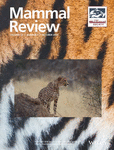Journal list menu
Export Citations
Download PDFs
Issue Information
Predictive Review
Sampling variables and their thresholds for the precise estimation of wild felid population density with camera traps and spatial capture–recapture methods
- Pages: 223-237
- First Published: 25 June 2023
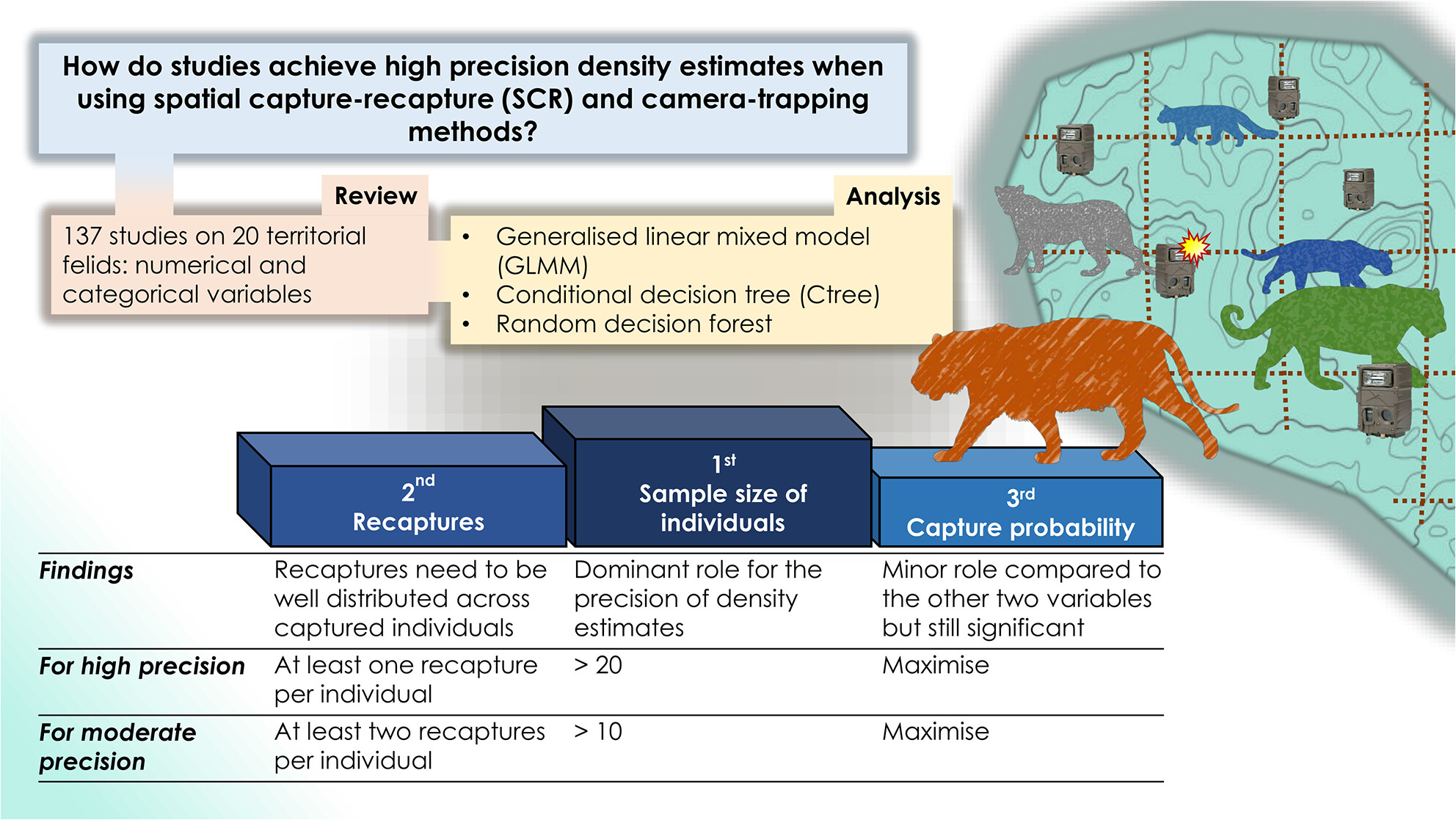
This work aimed to find the most important factors influencing the precision of density estimates calculated using camera-trapping and spatial capture–recapture (SCR) methods in studies targeting felid species on a global scale. From a large number of studies, we retrieved parameters such as the number of individuals captured, the number of their recaptures as well as the capture probability to be used as variables in the analysis. Concerning the modelling, we used different approaches to investigate the role of such variables in influencing density precision and rank them in order of importance. Our results revealed that the number of individuals and recaptures are the most important factor for density precision and particularly more than 20 individuals should be detected for high precision with on average at least one recapture per individual. When this cannot be achieved, more than 10 individuals with on average at least two recaptures each can still provide moderate precision.
Reviews
Collective decision-making in aquatic mammals
- Pages: 238-253
- First Published: 18 August 2023
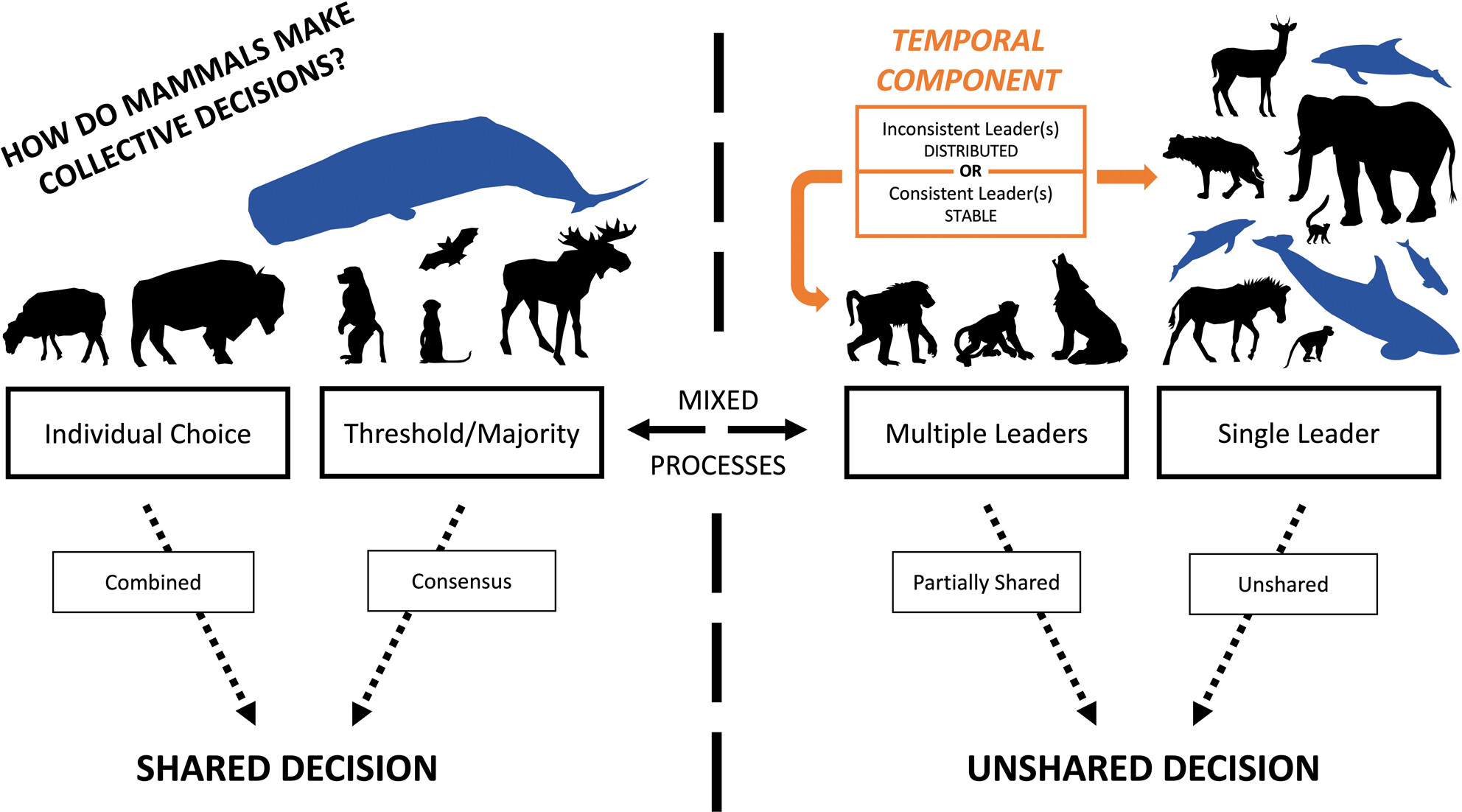
A framework for determining how decisions on a group level are made by non-human mammals. These decisions can either be shared (requiring a threshold/majority in a ‘consensus’ decision or an individual choice regarding which option to follow in a ‘combined’ decision) or unshared (where individuals will either follow a single leader in an ‘unshared’ decision or a set of leaders in a ‘partially shared’ decision). Sometimes decision-making processes have both shared and unshared components. When there is leadership, it may be is temporally ‘distributed’, meaning that the individual that leads is inconsistent over time, or ‘stable’, where there is a consistent individual leading over time. Silhouettes of representative species have been placed above their respective observed decision-making strategy type, with aquatic mammal species highlighted.
Three decades of research on Iberian wild Carnivora: trends, highlights, and future directions
- Pages: 254-270
- First Published: 16 August 2023
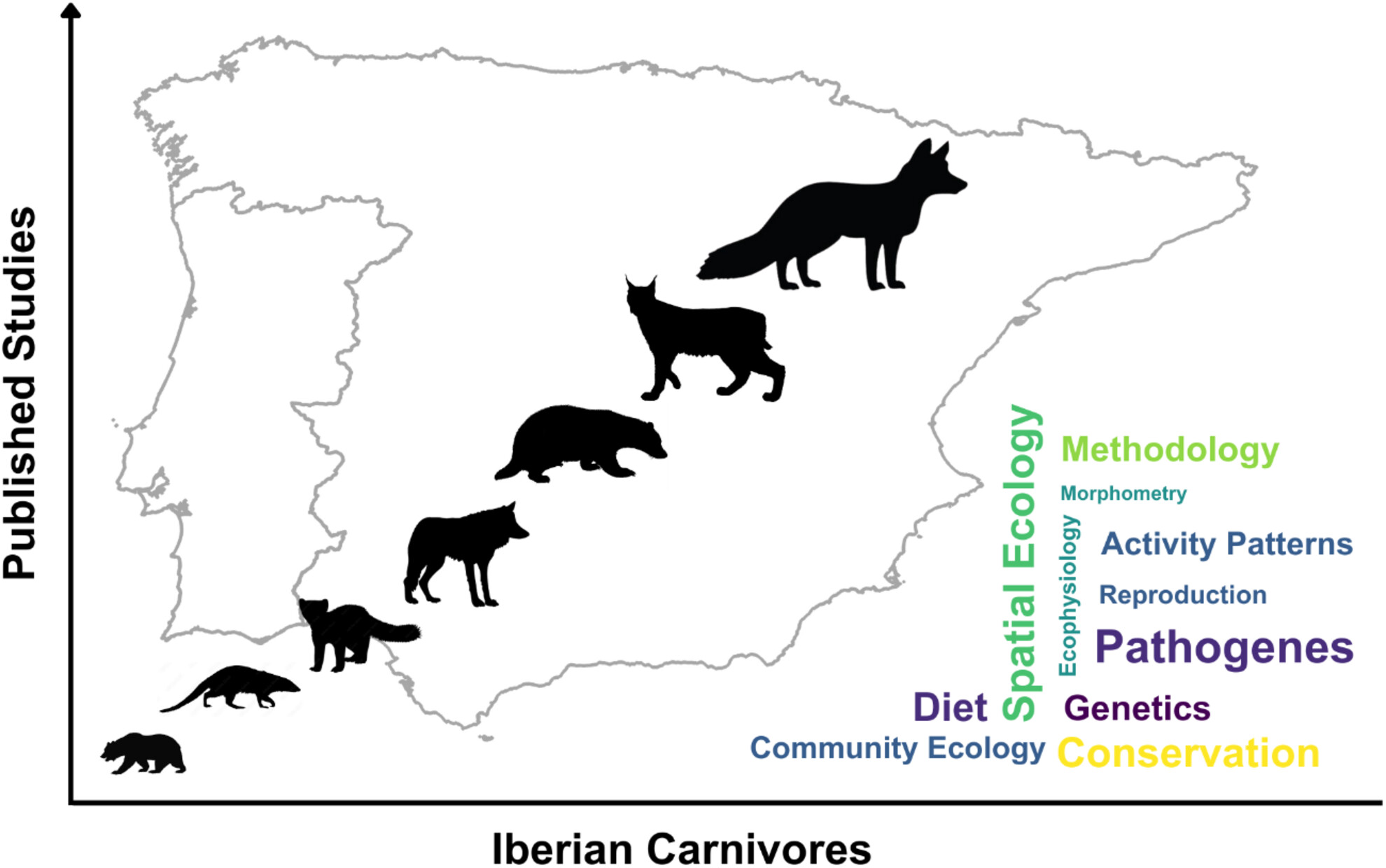
Carnivorans are pivotal components of ecosystems, but to properly understand their functional role in Iberian ecosystems, and manage and conserve them it is crucial to sum up the available regional information and identify what are the knowledge needs. We review the published research on wild Iberian carnivores over 30 years (1990–2020) to summarise current scientific knowledge available, assess species and ecoregion representativeness, identify key research topics addressed and those lacking investment, and suggest key future research priorities. From the 920 peer-reviewed articles involving wild Iberian carnivorans we detected, we found considerable heterogeneity in the topics and species investigated, with information regarding carnivores' morphometry and body condition, ecophysiology and reproductive biology, as well as brown bears, stoats, European minks and pine martens, being highly limited. Furthermore, for some ecoregions (e.g. northern ecoregions of Iberia, Iberian conifer forests and Northwest Iberian montane forests) species' adaptations to environmental and anthropic contexts are largely unknown.
Reviews, Editor's Choice
Interference competition driven by co-occurrence with tigers Panthera tigris may increase livestock predation by leopards Panthera pardus: a first step meta-analysis
- Pages: 271-286
- First Published: 18 August 2023
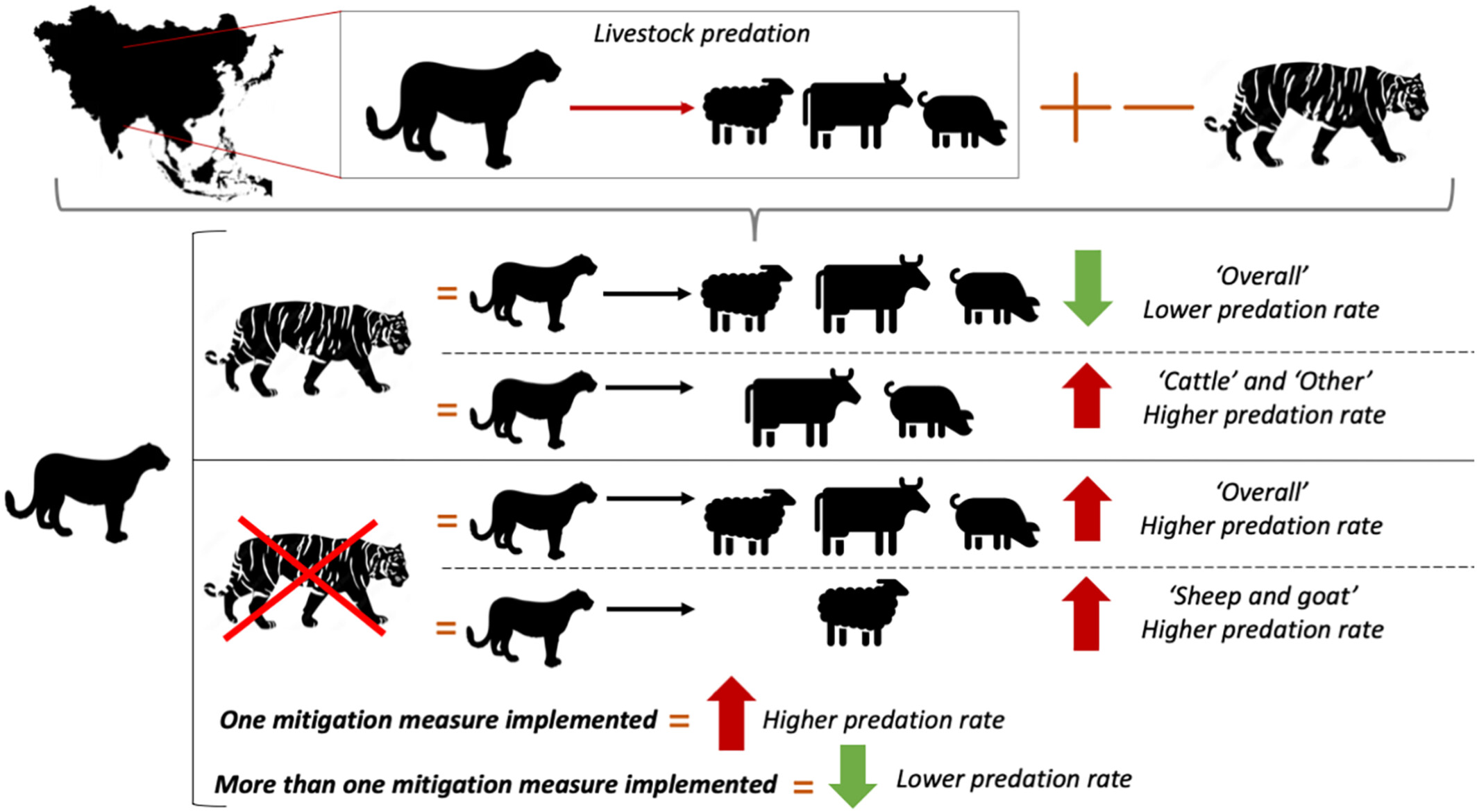
Tigers Panthera tigris and leopards Panthera pardus co-occur in most Asian countries, and because of their similar trophic niche, ‘interference competition’ may exist between these two species. Tigers generally occupy prime habitats and leopards could be forced to roam into peripheral human-altered environments to avoid competition, consequently increasing the risk of human-leopard conflicts. In this research, we completed a review of the scientific literature reporting information on livestock predations by leopards in areas of coexistence and non-coexistence with tigers. Our findings showed that the leopard's ‘overall’ livestock predation rate (i.e. individuals taken/year) was higher in the absence of tigers than in their presence, and the same was observed for the ‘sheep and goat’ predation rate. These results hence confirm the leopard's tendency to take livestock and, especially, smaller prey. The ‘cattle’ and ‘other’ predation rates were higher in the presence of tigers than in their absence, suggesting the existence of a sort of spatial segregation between predators in certain contexts. Lower levels of predation by leopards were observed on farms in which more prevention measures were used, than in those in which only one measure was implemented. We stress the importance of using proper prevention measures to mitigate human-leopard conflicts.
Reviews
Disentangling wildlife–cattle interactions in multi-host tuberculosis scenarios: systematic review and meta-analysis
- Pages: 287-302
- First Published: 23 August 2023
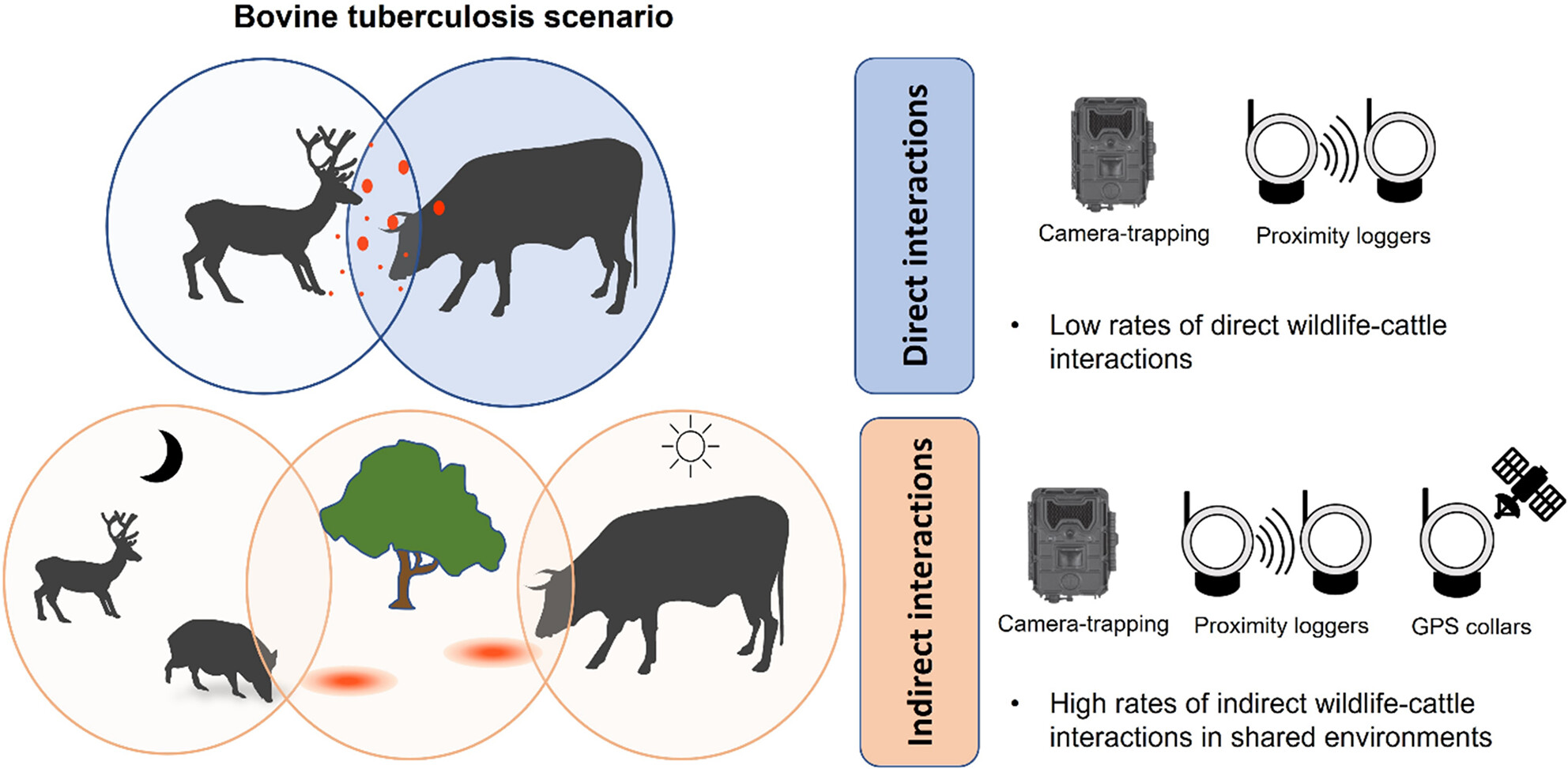
Main criteria and methods used to define a wildlife–cattle interaction relevant to animal tuberculosis (TB) transmission. Direct interactions imply close contact between species and were assessed through camera trapping and proximity loggers. Indirect interactions correspond to common space use by two different species within a specific timeframe and were assessed with camera trapping, proximity loggers and also Global Positioning System (GPS) collars. Direct interactions were rare. To prevent TB transmission to cattle, attention should be given to indirect interactions between wild mammals and cattle in shared environments, as these rates were 154 times higher than the mean of direct interaction rates.




